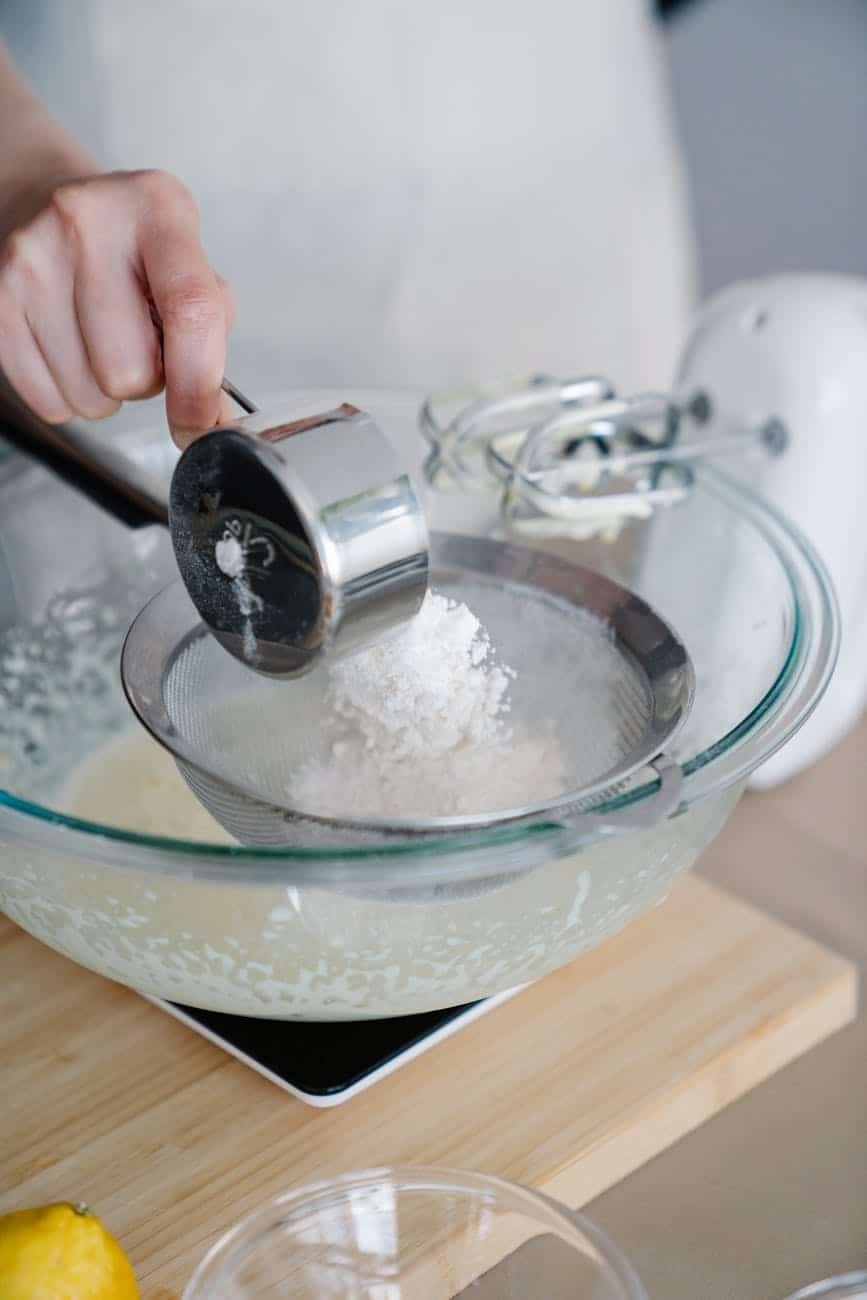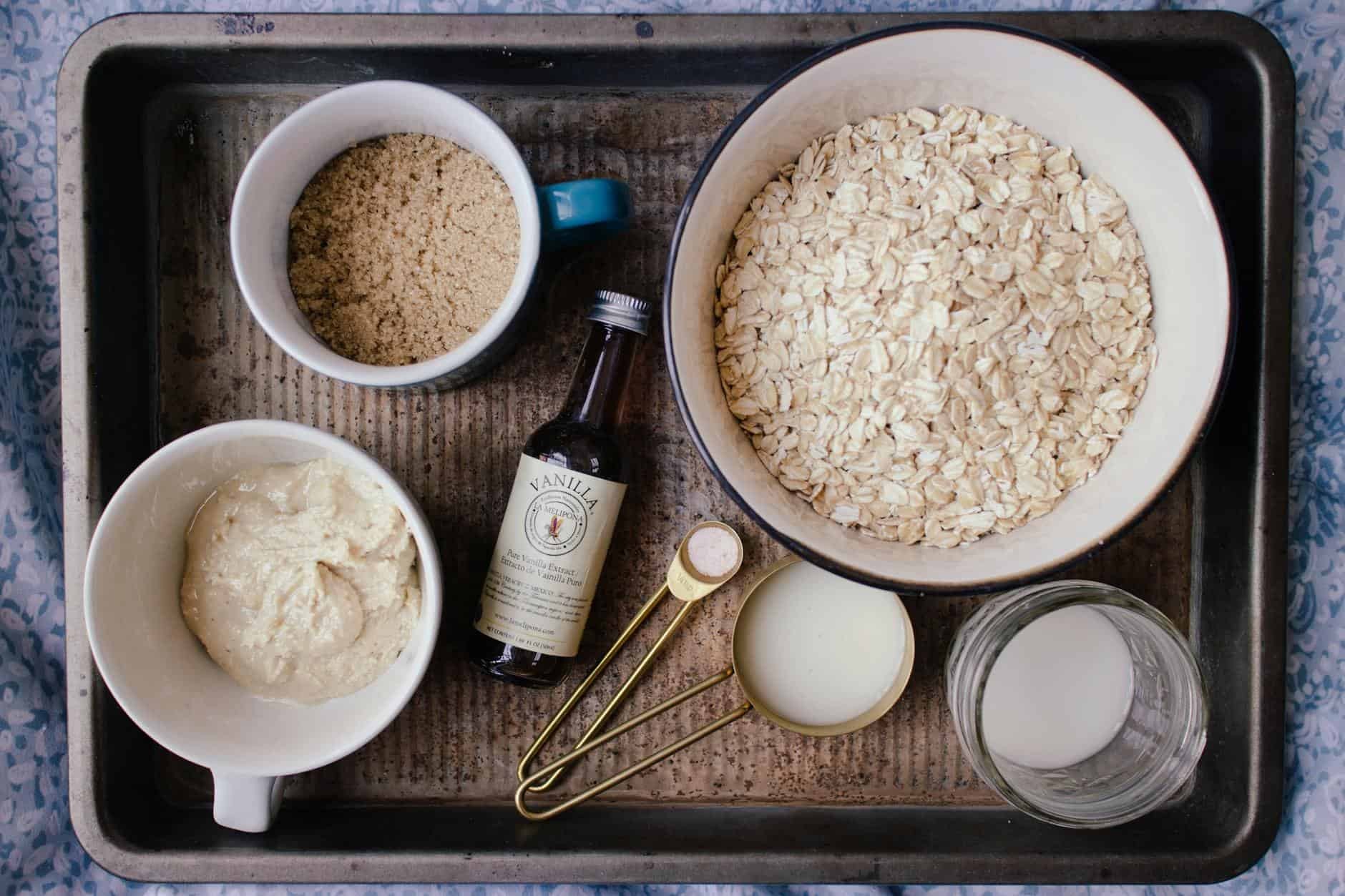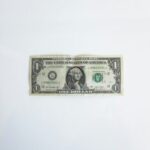How Much Is 2/3 Cups? It’s a common question when you’re in the kitchen, and at HOW.EDU.VN, we’re here to provide a definitive answer: 2/3 cup equals 10 tablespoons and 2 teaspoons, which is essential for precise cooking. Grasping this conversion enhances your culinary skills, allowing for accurate recipe scaling and ingredient substitutions. This article aims to clarify volume measurements, assist with recipe adjustments, and offer practical solutions.
1. Understanding the Basic Cup to Tablespoon Conversion
Let’s begin with the fundamentals to ensure we’re all on the same page.
- The Foundation: 1 cup is universally accepted as 16 tablespoons.
To determine how many tablespoons are in 2/3 cup, we apply this foundation to a simple calculation.
Since 2/3 represents two-thirds of a cup, we multiply 16 tablespoons by 2/3:
- Calculation: 16 tablespoons * 2/3 = 10.666 tablespoons.
This result tells us that 2/3 cup contains approximately 10 tablespoons and 2 teaspoons. Understanding this conversion is invaluable, whether you are a home cook or a professional chef.
1.1. Why Mastering Kitchen Conversions Is Essential
Understanding conversions such as cups to tablespoons is not just an academic exercise. It has a significant impact on your cooking and baking outcomes.
Here are a few reasons why this knowledge is indispensable:
- Recipe Adjustments: Recipes often need scaling up or down. Knowing precise conversions allows you to adjust ingredient quantities without guesswork.
- Ingredient Substitutions: Sometimes, you may lack a specific measuring tool. Understanding conversions enables you to use alternative tools while maintaining accuracy.
- Consistent Results: Accurate measurements lead to consistent results. Whether it’s a cake, sauce, or stew, consistent results enhance your confidence and enjoyment in the kitchen.
For example, if you want to halve a recipe that calls for 2/3 cup, you’ll know you need 5 tablespoons and 1 teaspoon. Doubling the same recipe would require 1 1/3 cups, equivalent to 21 tablespoons and 1 teaspoon.
2. Detailed Conversion Table: Cups to Tablespoons
For quick reference, here is a detailed conversion table to assist you in the kitchen. This table provides conversions for commonly used cup measurements, saving you time and effort.
| Cups | Tablespoons |
|---|---|
| 1/8 cup | 2 tablespoons |
| 1/4 cup | 4 tablespoons |
| 1/3 cup | 5 tablespoons + 1 teaspoon |
| 1/2 cup | 8 tablespoons |
| 2/3 cup | 10 tablespoons + 2 teaspoons |
| 3/4 cup | 12 tablespoons |
| 1 cup | 16 tablespoons |


This table is a handy tool for any cook or baker, allowing for quick and accurate measurements. Keep it accessible in your kitchen for immediate reference.
2.1. Expert Tips for Precise Measuring
Accuracy in measurements is key to achieving the desired results in cooking and baking. Here are some expert tips to help you measure ingredients with precision.
- Use Calibrated Measuring Tools: Invest in a set of quality measuring cups and spoons. Ensure they are designed for dry or liquid ingredients as appropriate. Avoid using everyday cutlery, which can lead to inaccuracies.
- Leveling Dry Ingredients: When measuring dry ingredients, use the flat side of a knife or a leveling tool to remove any excess. This ensures you have an accurate amount without packing or compressing the ingredient.
- Eye-Level Check for Liquids: When measuring liquid ingredients, place the measuring cup on a flat surface and lower your eye level to the same height as the cup. This ensures you’re reading the measurement accurately, without parallax errors.
- Know Your Ingredient Densities: Different ingredients have different densities. A cup of flour, for example, weighs differently than a cup of sugar. Using a kitchen scale for weight measurements can further enhance accuracy.
By following these tips, you can improve the precision of your measurements and the consistency of your culinary creations.
2.2. Real-World Scenarios: When to Use These Conversions
Understanding and applying these conversions can be particularly useful in several real-world cooking scenarios.
- Scaling Recipes: When adjusting a recipe to serve more or fewer people, knowing the exact conversions ensures that the flavor profile remains balanced.
- Substituting Tools: In situations where you lack a 2/3 cup measuring cup, knowing that it equals 10 tablespoons and 2 teaspoons allows you to proceed without interruption.
- Creating Custom Recipes: If you enjoy experimenting with new recipes, these conversions help you fine-tune ingredient ratios to achieve the desired taste and texture.
- Emergency Baking: Sometimes, you might find yourself short on an ingredient. Knowing how to convert measurements can help you make substitutions without ruining the recipe.
For instance, when doubling a sauce recipe that calls for 2/3 cup of olive oil, you will know to use 1 1/3 cups, or 21 tablespoons and 1 teaspoon.
3. Practical Applications of Cup to Tablespoon Conversions
Beyond simple recipe adjustments, understanding cup to tablespoon conversions can be applied in various practical ways.
3.1. Enhancing Culinary Precision
In the culinary world, precision is paramount. Understanding how to convert measurements ensures that you maintain consistency and accuracy in your dishes.
- Baking: In baking, where ratios are crucial, accurate measurements can be the difference between a perfect cake and a culinary disaster. Converting cups to tablespoons helps maintain the right balance.
- Sauce Making: When making sauces, precise measurements of ingredients like oil, vinegar, and spices are essential for achieving the desired flavor profile.
- Drink Mixing: Whether you’re a professional bartender or a home enthusiast, knowing these conversions can help you create well-balanced and delicious cocktails.
3.2. Simplifying International Recipes
Many international recipes use different measurement systems, such as the metric system. Converting between cups and tablespoons can help you adapt these recipes for your kitchen.
- Metric Equivalents: Understanding that 2/3 cup is approximately 158 milliliters helps you translate recipes from around the world.
- Consistency: Maintaining consistency in your measurements ensures that the international dishes you prepare taste authentic and delicious.
3.3. Avoiding Common Measurement Pitfalls
Even experienced cooks sometimes make measurement mistakes. Understanding conversions can help you avoid these pitfalls.
- Dry vs. Liquid Measuring Cups: Using the wrong type of measuring cup can lead to inaccuracies. Always use cups designed for the specific type of ingredient.
- Overpacking Ingredients: When measuring dry ingredients like flour, avoid packing them into the cup, as this can result in too much of the ingredient being used.
- Inaccurate Spoons: Using regular spoons instead of measuring spoons can lead to inconsistencies in your recipes.
4. Deep Dive: Volume Measurements in Cooking
Volume measurements are a cornerstone of cooking and baking. Let’s delve deeper into the nuances of volume measurements to enhance your culinary skills.
4.1. Understanding Different Measurement Systems
Different parts of the world use different measurement systems. The most common are the U.S. customary system and the metric system.
- U.S. Customary System: This system uses units like cups, tablespoons, teaspoons, and ounces.
- Metric System: The metric system uses units like milliliters, liters, and grams.
Understanding both systems allows you to easily convert and adapt recipes from different sources.
4.2. The Role of Density in Measurements
Density plays a significant role in accurate measurements. Different ingredients have different densities, which means a cup of one ingredient may weigh differently than a cup of another.
- Flour vs. Sugar: A cup of flour is less dense than a cup of sugar. This means that a cup of sugar will weigh more than a cup of flour.
- Liquids vs. Solids: Liquids and solids have different densities, which affects how they should be measured. Liquids should be measured in liquid measuring cups, while solids should be measured in dry measuring cups.
4.3. Techniques for Measuring Difficult Ingredients
Some ingredients are more challenging to measure accurately. Here are some techniques for measuring difficult ingredients.
- Sticky Ingredients: For sticky ingredients like honey or molasses, lightly coat the measuring cup with cooking spray before adding the ingredient. This will help it slide out easily.
- Powdered Ingredients: For powdered ingredients like cocoa or powdered sugar, sift the ingredient before measuring to remove any lumps and ensure an accurate measurement.
- Solid Fats: For solid fats like butter or shortening, use a dry measuring cup and pack the ingredient tightly. Level off the top with a knife.
5. Addressing Common Measurement Dilemmas
Even with a good understanding of conversions and techniques, common measurement dilemmas can arise in the kitchen.
5.1. What to Do When You Lack a Measuring Tool
Sometimes, you may find yourself without the right measuring tool. Here are some solutions.
- Using Household Items: Use a clean, empty can or jar with known volume as a makeshift measuring cup.
- Converting to Weight: If you have a kitchen scale, convert the volume measurement to a weight measurement using online resources.
- Estimating: In a pinch, you can estimate measurements, but be aware that this may affect the final result of your recipe.
5.2. Dealing with Inconsistent Measurements
Inconsistent measurements can occur due to various factors. Here’s how to deal with them.
- Calibrate Your Tools: Periodically calibrate your measuring cups and spoons to ensure they are accurate.
- Use a Kitchen Scale: For critical measurements, use a kitchen scale to weigh ingredients, as weight measurements are more precise than volume measurements.
- Double-Check: Always double-check your measurements before adding ingredients to your recipe.
5.3. Adjusting Recipes for Different Altitudes
Altitude can affect cooking and baking, particularly for recipes like cakes and bread.
- Higher Altitude: At higher altitudes, water boils at a lower temperature, which can affect the texture and rise of baked goods.
- Adjusting Ingredients: Adjusting ingredients like flour, sugar, and liquids can help compensate for the effects of altitude. Consult online resources for specific adjustments based on your altitude.
6. Advanced Measurement Techniques
For those looking to take their culinary skills to the next level, here are some advanced measurement techniques.
6.1. Using a Kitchen Scale for Precision
A kitchen scale is an invaluable tool for achieving precision in your cooking and baking.
- Weight vs. Volume: Weight measurements are more accurate than volume measurements, particularly for dry ingredients.
- Consistency: Using a kitchen scale ensures consistency in your recipes, regardless of variations in ingredient density.
6.2. Sifting and Aerating Ingredients
Sifting and aerating ingredients can improve the texture and rise of baked goods.
- Sifting Flour: Sifting flour removes lumps and aerates the flour, resulting in a lighter and more tender crumb.
- Aerating Eggs: Aerating eggs by whisking them thoroughly can add volume and lightness to recipes like cakes and meringues.
6.3. Hydrating Dry Ingredients
Hydrating dry ingredients before adding them to a recipe can improve their texture and flavor.
- Soaking Grains: Soaking grains like oats or quinoa before cooking can improve their texture and digestibility.
- Blooming Spices: Blooming spices in hot oil or butter can enhance their flavor and aroma.
7. The Science Behind Accurate Measurements
Accurate measurements are not just about following a recipe; they are rooted in scientific principles.
7.1. Understanding Chemical Reactions
Cooking and baking involve chemical reactions, and precise measurements are crucial for controlling these reactions.
- Baking Soda and Acid: In baking, the reaction between baking soda and an acid (like vinegar or lemon juice) produces carbon dioxide, which leavens the batter. Accurate measurements of these ingredients are essential for the proper rise.
- Maillard Reaction: The Maillard reaction, which occurs when proteins and sugars are heated, is responsible for the browning and flavor development in many foods. Precise measurements of ingredients like sugar and amino acids are important for controlling this reaction.
7.2. The Impact of Water Content
Water content plays a critical role in the texture and consistency of many dishes.
- Hydration: Proper hydration of ingredients like flour and starches is essential for achieving the desired texture in baked goods and sauces.
- Evaporation: Controlling the evaporation of water during cooking can affect the concentration of flavors and the consistency of sauces and soups.
7.3. The Role of Temperature
Temperature affects the rates of chemical reactions and the physical properties of ingredients.
- Melting Points: Understanding the melting points of ingredients like butter and chocolate is important for achieving the desired texture in recipes.
- Cooking Temperatures: Cooking foods at the right temperature ensures that they are cooked through without being overcooked or undercooked.
8. Expert Insights on Measurement Best Practices
To further enhance your understanding of measurements, let’s explore some expert insights on best practices.
8.1. Interview with a Professional Chef
We interviewed Chef Emily Carter, a renowned pastry chef, about her approach to measurements.
- Precision is Key: Chef Carter emphasized that precision is key in baking. “In pastry, even a small deviation in measurements can significantly impact the outcome,” she said.
- Use a Scale: She recommends using a kitchen scale for all dry ingredients. “A scale provides the most accurate and consistent results.”
- Calibrate Regularly: Chef Carter also stressed the importance of calibrating measuring tools regularly. “Make sure your scale and measuring cups are accurate by checking them periodically.”
8.2. Tips from a Food Scientist
We also spoke with Dr. Robert Jones, a food scientist, about the scientific aspects of measurements.
- Understand Ingredient Properties: Dr. Jones highlighted the importance of understanding the properties of different ingredients. “Knowing how ingredients interact with each other can help you make informed adjustments to your recipes.”
- Control Variables: He advised controlling as many variables as possible. “Use consistent measuring techniques and tools to minimize inconsistencies.”
- Document Your Results: Dr. Jones recommended documenting your results. “Keep track of your recipes and measurements, and note any adjustments you make. This will help you refine your techniques over time.”
8.3. Advice from a Home Cook
Finally, we spoke with Sarah Miller, an avid home cook, about her experiences with measurements.
- Practice Makes Perfect: Sarah emphasized that practice makes perfect. “The more you cook and bake, the better you’ll become at estimating and adjusting measurements.”
- Don’t Be Afraid to Experiment: She encouraged readers not to be afraid to experiment. “Try new recipes and techniques, and see what works best for you.”
- Learn from Your Mistakes: Sarah also stressed the importance of learning from your mistakes. “Everyone makes mistakes in the kitchen. The key is to learn from them and keep improving.”
9. How HOW.EDU.VN Can Help You Master Culinary Skills
At HOW.EDU.VN, we are committed to providing you with the resources and expertise you need to master your culinary skills.
9.1. Access to Expert Advice
We offer access to a network of experienced chefs, food scientists, and home cooks who can provide you with personalized advice and guidance.
- Consultations: Schedule one-on-one consultations with our experts to get answers to your specific questions and challenges.
- Workshops: Participate in our workshops and seminars to learn new techniques and improve your skills.
9.2. Comprehensive Resources
We provide a comprehensive library of articles, videos, and tutorials that cover a wide range of culinary topics.
- Measurement Guides: Access our detailed measurement guides to learn about different units of measurement and how to convert between them.
- Recipe Collections: Explore our collection of tested and perfected recipes, complete with accurate measurements and step-by-step instructions.
9.3. Community Support
Join our vibrant community of food enthusiasts and connect with like-minded individuals.
- Forums: Participate in our forums to ask questions, share tips, and exchange ideas.
- Social Media: Follow us on social media to stay up-to-date on the latest culinary trends and news.
10. Final Thoughts: The Art and Science of Measurement
Mastering measurements is both an art and a science. It requires a combination of knowledge, skill, and intuition. By understanding the principles behind accurate measurements and practicing diligently, you can elevate your cooking and baking to new heights.
Measurements might seem like small details, but they are the foundation of successful cooking and baking. So, next time you’re faced with a recipe that seems confusing, you’ve got this conversion knowledge in your back pocket. Happy cooking.
11. Frequently Asked Questions: Tablespoons in 2/3 Cup
1. What exactly is a tablespoon?
In the U.S. customary measurement system, 1 tablespoon, often abbreviated as Tbsp, is a unit of volume. It’s equal to 3 teaspoons or approximately 15 milliliters.
2. What is 2/3 cup in metric units?
In the metric system, 2/3 cup is about 158 milliliters, useful for international recipes or those who prefer using metric units.
3. Why are accurate measurements so critical in cooking?
Especially in baking, where ingredient ratios are key, accurate measurements ensure your end product has the right texture, flavor, and appearance.
4. How do I measure dry ingredients accurately?
Use dry measuring cups, spoon in the ingredient, and level off the top with a flat-edged utensil to ensure precision.
5. What’s the best way to measure liquid ingredients?
Place a liquid measuring cup on a flat surface, pour in the liquid, and check the measurement at eye level to ensure accuracy.
6. Can I use regular spoons instead of measuring spoons?
While possible in a pinch, it’s not recommended. Measuring spoons provide a standardized volume for consistent results.
7. What should I do if I don’t have a 2/3 cup measuring cup?
Use 10 tablespoons and 2 teaspoons as a substitute, since this is the equivalent volume.
8. Are there differences between measuring dry and liquid ingredients?
Yes, dry ingredients are leveled off, while liquid ingredients are measured at eye level in a liquid measuring cup.
9. How does altitude affect measurements in baking?
At higher altitudes, adjustments to recipes may be needed due to lower air pressure, which can affect rising and baking times.
10. Where can I find reliable measurement conversion charts?
Websites like HOW.EDU.VN offer comprehensive conversion charts to help with cooking and baking measurements.
Are you looking for personalized advice to perfect your culinary skills? Do you have questions about measurements or recipe adjustments? Contact our team of expert PhDs at HOW.EDU.VN for tailored guidance. We connect you with seasoned professionals who offer solutions to your culinary challenges, saving you time and ensuring reliable results. Contact us today for expert assistance and elevate your cooking experience. Address: 456 Expertise Plaza, Consult City, CA 90210, United States. Whatsapp: +1 (310) 555-1212. Website: how.edu.vn.

